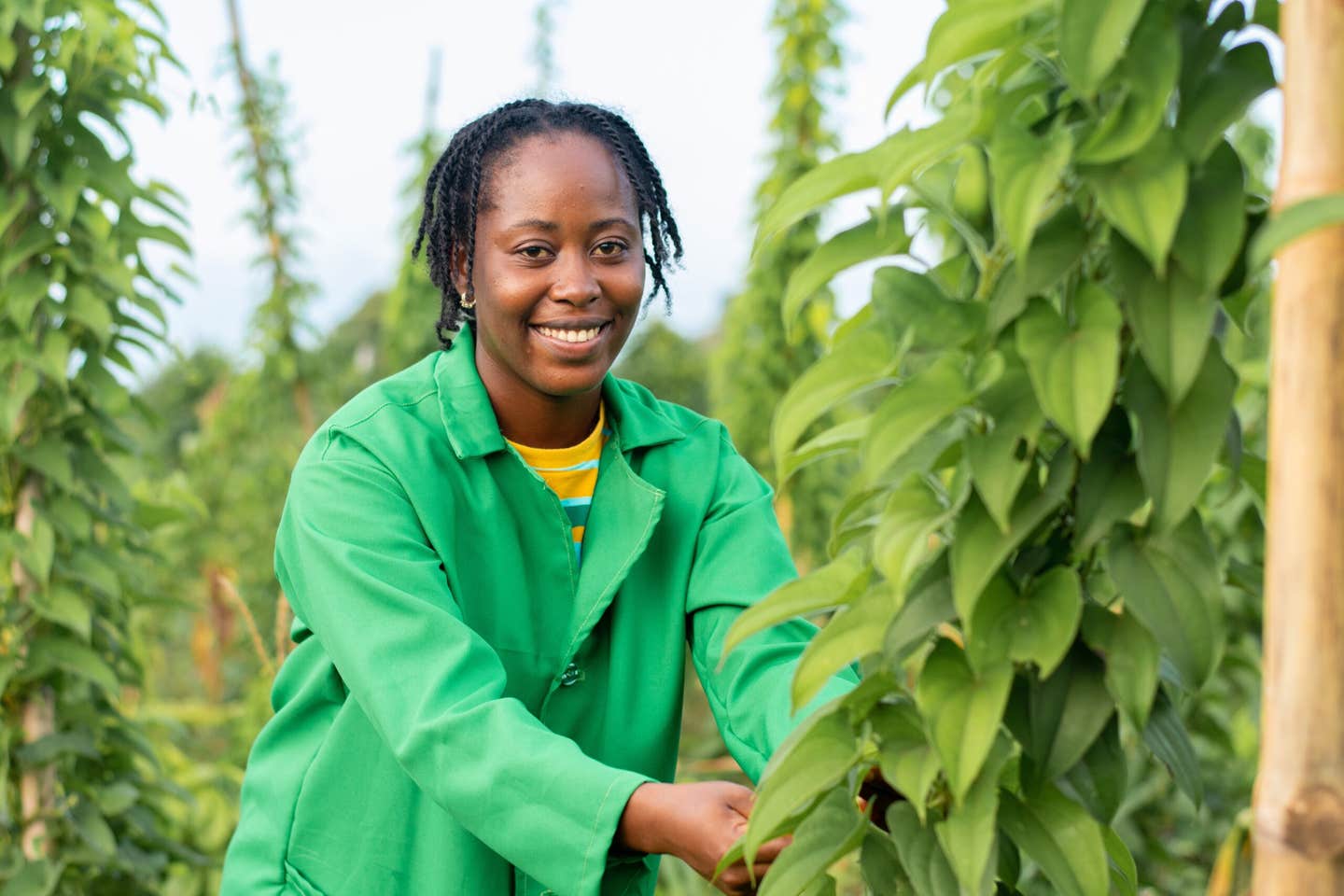Scientists identify nine Nigerian plants with powerful anticancer effects
Nigerian plants like guava, onion, and waterleaf carry powerful cancer-fighting compounds. Science now confirms their healing potential.

Nigerian food plants show promise in cancer therapy through natural compounds that fight tumors and reduce inflammation. (CREDIT: Shutterstock)
Cancer remains one of the most serious health threats across the globe. In Nigeria, it grows more urgent each year. Cases of breast, cervical, liver, and prostate cancer continue to rise, and so do the deaths. While treatments like chemotherapy and radiation have helped many people, they can come with painful side effects and don't always work. In search of better answers, researchers are turning to a surprising source—plants.
For centuries, communities across Nigeria have used food plants for healing. These plants offer a wide variety of natural compounds that might help treat cancer. Modern science has begun to study them, revealing just how powerful they could be. Xia & He Publishing Inc. has found nine common Nigerian plants that stand out. Their leaves, roots, seeds, and oils contain molecules that may stop cancer in its tracks. Some of them kill cancer cells, slow tumor growth, or reduce the inflammation that fuels cancer spread.
Unlocking Nature’s Pharmacy
Plants make many chemicals to protect themselves from pests and disease. These same chemicals—called phytochemicals—can also fight cancer in humans. They work in different ways. Some cause cancer cells to self-destruct through a process called apoptosis. Others slow or stop cell division, keeping tumors from growing. A few stop cancer from building new blood vessels—a step that’s key for tumors to survive and spread.
One such plant is Spondias mombin. Known for its yellow fruit, it holds high levels of quercetin and carotenoids. Quercetin may block signals that tell cancer cells to grow. It also triggers cancer cell death and reduces inflammation. Studies show it works through PI3K/Akt and MAPK pathways—two systems that often get hijacked in cancer.
Xanthosoma sagittifolium, a leafy plant also known as cocoyam, shows special promise against leukemia. It holds flavonoids and tannins that damage cancer cells directly. They stop the cell cycle, prevent new blood vessel formation, and send the signal for the cancer cell to die.
Elaeis guineensis, or oil palm, is best known for its reddish oil. That oil contains tocotrienols, a rare form of vitamin E. These nutrients fight free radicals, unstable molecules that damage cells. In breast cancer studies, tocotrienols reduced tumor cell growth and even forced them into early death.
Another promising plant is Irvingia gabonensis, often called African mango. The seeds contain gallotannins—compounds that boost immune responses and help kill cancer cells. This mango also helps balance metabolic pathways that cancer disrupts.
Related Stories
- Climate change is driving a global surge in cancer among women
- Powerful new protein effectively delivers cancer-fighting drugs directly into cells
Everyday Foods with Hidden Powers
Many of these helpful plants are already part of the local diet. Allium cepa, or onion, is one example. Onions pack organosulfur compounds, flavonoids, and phenolic acids. These can destroy toxins, reduce inflammation, and protect DNA. Onions might even help beat drug resistance, one of cancer’s greatest challenges.
Blighia sapida, better known as ackee, contains molecules that work against breast cancer. It blocks the ERK5 pathway, which plays a key role in cancer growth. Ackee also helps fight oxidative stress, a major source of cell damage.
Dioscorea dumetorum, a type of yam, produces diosgenin. This natural steroid lowers inflammation, kills cancer cells, and interrupts harmful cell signals like NF-κB and MAPK. Both of these are linked to chronic disease and tumor formation.
Psidium guajava, or guava, also helps protect against cancer. Its leaves are full of tannins and phenolic acids that stop DNA damage. They also reduce inflammation and keep tumor cells from growing unchecked.
Talinum triangulare, known as waterleaf, includes the powerful antioxidant quercetin. It supports immune function, reduces oxidative damage, and helps cancer cells die off naturally. Waterleaf shows great promise for use in daily meals and cancer prevention alike.
How These Plants Fight Cancer
Each plant works differently, but they often target the same basic systems. Cancer cells grow fast, divide often, and avoid death. These plants step in to stop that.
They trigger apoptosis. This process, also called programmed cell death, clears out faulty or dangerous cells. Many plant compounds push cancer cells to die by activating pro-death proteins or shutting down survival signals.
They halt the cell cycle. Cancer cells must copy themselves to grow. These plants stop that by interfering with enzymes that control cell division. They can block growth at key points like the G1/S or G2/M phase.
They stop angiogenesis. Tumors need blood vessels to get nutrients. Without new blood flow, they shrink or die. Compounds in these plants block VEGF and other factors that tumors use to build their own blood supply.
They fight inflammation and stress. Chronic inflammation and oxidative stress feed cancer growth. Many plant compounds calm the immune system, reduce harmful signals, and stop molecules that cause DNA damage.
More Research Needed
While lab and animal studies offer hope, the road to real treatment takes time. Many factors can affect plant chemistry—soil, weather, and harvest time all matter. Extracts from the same plant may vary from batch to batch. Clinical trials in humans are still rare. Researchers must test each plant for safety and long-term effects. They also need to decide how much to use, how to prepare it, and which types of cancer respond best.
Public awareness remains low. Many people, including health workers, don’t know the cancer-fighting power of these local foods. Merging traditional plant knowledge with modern science could change that. Better outreach and education can teach communities how to grow, prepare, and use these plants safely. That means less reliance on costly imports and more support for local agriculture and healthcare.
A New Path Forward
Combining modern medicine with traditional plant wisdom could change the future of cancer care. These Nigerian plants contain natural compounds that offer real potential. They fight cancer through multiple paths—killing cells, blocking growth, and calming inflammation.
Adding these plants to cancer care won’t replace current treatments. But they could work alongside them to improve outcomes and reduce side effects. For many people in low-resource areas, plant-based therapies may offer safer, more affordable options. The path ahead includes more lab work, clinical testing, and community outreach. But the science is already clear: nature has tools to fight cancer. Some of them may be growing right outside the kitchen window.
Research findings are available online in the journal Future Integrative Medicine.
Note: The article above provided above by The Brighter Side of News.
Like these kind of feel good stories? Get The Brighter Side of News' newsletter.



